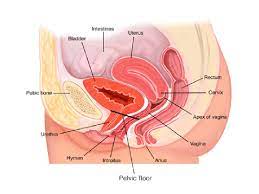
Woman Urology, the branch of medicine that deals with the urinary tract and the reproductive system of both men and women, has made significant advances in recent years. However, female urology, which is a subspecialty focused specifically on the urinary and reproductive health of women, has been a rapidly growing field, with new research and technologies improving patient care and outcomes.
What Is Woman Urology:
Woman Urology, One of the key areas of focus in female urology is urinary incontinence. This common condition, which affects millions of women, can have a profound impact on quality of life, leading to social isolation, depression, and decreased physical activity. Despite its prevalence, many women are reluctant to seek treatment for urinary incontinence, often due to embarrassment or a lack of knowledge about available options.
Today, there are a variety of minimally invasive treatments available for urinary incontinence, including pelvic floor muscle exercises, electrical stimulation, and injection therapy. In addition, surgical options, such as sling procedures or bladder suspension, can provide a more permanent solution for women with severe incontinence.
Another area of growth in female urology is the management of urinary tract infections (UTIs). UTIs are common in women, with roughly half of all women experiencing at least one episode in their lifetime. These infections can cause pain, discomfort, and other symptoms, and can lead to long-term complications if left untreated.
What We Should Know About the Woman Urology:
In response to the growing demand for effective UTI treatment, new antibiotics and other medications have been developed, offering women a wider range of options. In addition, patient education and self-care strategies, such as proper hygiene and fluid intake, can help reduce the risk of UTI recurrence.
Another important aspect of female urology is pelvic organ prolapse. This condition, which occurs when the pelvic organs, including the bladder, uterus, or rectum, drop from their normal position, can cause discomfort, pain, and other symptoms. In severe cases, it can also lead to urinary incontinence or bowel problems.
Fortunately, advances in surgical techniques and the use of mesh materials have greatly improved outcomes for women with pelvic organ prolapse. Today, many women can undergo minimally invasive procedures that provide long-term symptom relief, with a low risk of complications or reoccurrence.
Finally, female urology is also playing an important role in the management of menopause-related conditions. As women enter menopause, they may experience a variety of symptoms, including hot flashes, vaginal dryness, and bladder problems.
To address these issues, female urologists are now offering a range of treatments, including hormone replacement therapy, vaginal moisturizers, and bladder strengthening exercises. In addition, many urologists are working with gynecologists and other specialists to develop multi-disciplinary approaches to care, ensuring that women receive the most comprehensive and effective treatment possible.
In conclusion, advances in female urology have had a significant impact on the health and well-being of women. Whether dealing with urinary incontinence, UTIs, pelvic organ prolapse, or menopause-related conditions, women today have a range of effective treatment options available, helping them to manage their symptoms and improve their quality of life. As this field continues to grow, we can expect to see even more exciting developments in the years to come, further improving the care and outcomes for women with urinary and reproductive health concerns.
Woman Urology How Its Work?
Female urology is a subspecialty within the field of urology that focuses on the urinary and reproductive health of women. It works by utilizing a variety of diagnostic tests and treatments to address a wide range of conditions, including urinary incontinence, urinary tract infections, pelvic organ prolapse, and menopause-related issues.
To diagnose a patient, a female urologist will typically begin with a thorough medical history and physical examination, followed by tests such as urinalysis, pelvic ultrasound, or cystoscopy (an examination of the bladder using a thin, lighted tube). The urologist will then use this information to develop an individualized treatment plan, which may include medication, physical therapy, or surgery.
In the case of urinary incontinence, for example, a female urologist may recommend pelvic floor muscle exercises, electrical stimulation, or injection therapy. For urinary tract infections, antibiotics and other medications may be prescribed, along with self-care strategies such as proper hygiene and increased fluid intake.
Woman Urology Services:
For pelvic organ prolapse, minimally invasive surgical procedures using mesh materials may be recommended, while for menopause-related conditions, hormone replacement therapy, vaginal moisturizers, and bladder strengthening exercises may be recommended.
In all cases, the goal of female urology is to provide women with the most effective and appropriate treatment for their specific condition, helping to improve their quality of life and reduce the impact of their symptoms. This is achieved through a collaborative approach, with female urologists working with other specialists, such as gynecologists, to provide comprehensive and coordinated care.
Overall, female urology is an important and growing field that is making a real difference in the lives of women. Whether you are dealing with urinary or reproductive health concerns, working with a female urologist can provide you with the expert care and support you need to manage your symptoms and improve your overall health and well-being.

Conclusion:

